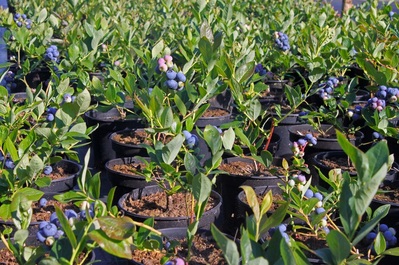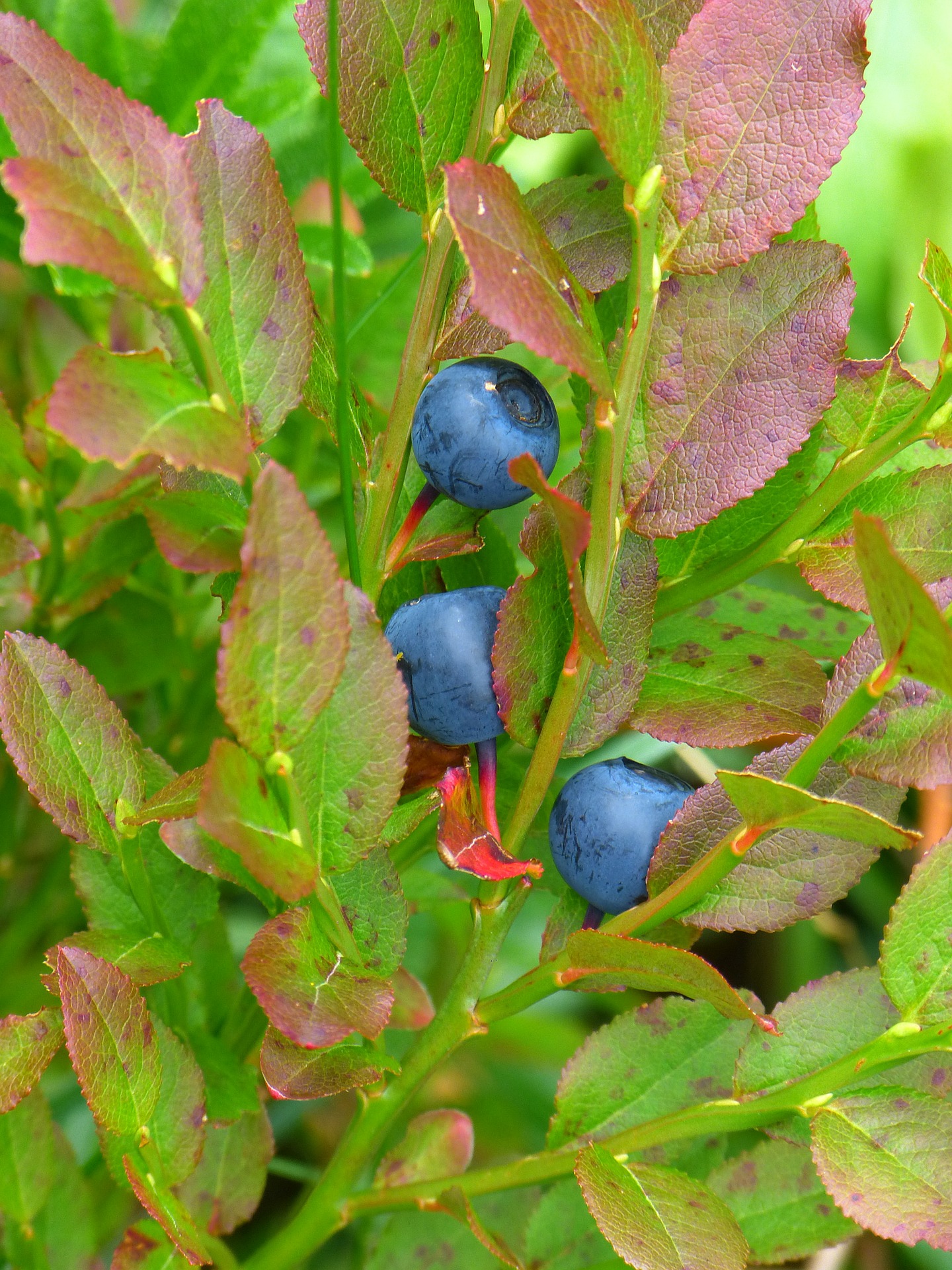BLUEBERRIES |
| When to Plant Blueberries are usually available as early as mid-April. For the first few weeks, either
Blueberry bushes are often available throughout the growing season. |
Not all blueberries are created equal. Before buying blueberry bushes, decide what features are most important to you. Is it berry size? Berry flavour? Proven cold hardiness? High yields? Whatever feature(s) are most important to you will guide you to your ideal variety choice.
| For best fruit set, you'll actually require two or more different varieties with the same or overlapping bloom times. You can pair an early season variety with a mid season variety, a mid season variety with a late season variety. Basically, any pollination pairing will work except for an early season with a late season variety. |
Blueberries are also classified according to their bush height: low-bush, half-high, and high-bush. The half-high varieties tend to be the hardiest of the bunch.
Also see the Proven Performer Varieties listed at the top of the page, in the Growing Blueberries Overview section.
Half-High Varieties to Consider
- Chippewa: A reliable producer of sweet, large, firm sky-blue berries. Grows 3-5' high and wide. A mid-season variety
- Northblue: Perhaps the highest yielding variety for our area; berries are large, sweet, firm, and dark blue. Grows 3-4' high and wide. A mid-season variety
- Northcountry: Produces an abundance of small to medium, sweet, mild sky blue berries. Grows 2-4' high and wide. A mid-season variety
- Northland: A small to medium sized, dark blue berry with wild blueberry flavour. Grows up to 4' high and wide. A mid to late season variety
- St. Cloud: A high yielding variety with medium sized, firm, flavourful, dark blue berries. Excellent for fresh eating. Grows 4' high and wide. An early season variety
- Patriot: A hardy, reliable producer of sweet, large berries. Grows 3-4' high. An early season variety
- Duke: A high-yielding variety producing large, mild-tasting berries. Grows 4' high and wide. An early season variety
- Reka: A high-yielding variety that produces medium sized, tasty, firm blue fruit. Grows 4' high and wide. An early-season variety
- Bluecrop: Produces large, sweet, mild tasting berries. Grows 4' high and wide. A mid-season variety
- Chandler: Produces the largest sized blueberries in the world! Grows 4' high and wide. A late-season variety that produces over many weeks
Novelty Varieties to Consider
- Razz: developed in the 1930's but remained obscure because of its unsuitability for commercial production. Large, powder blue berries have a unique raspberry flavor. Grows 3-4' high. A mid-season variety.
- Pink Popcorn: Introduced in 2014, this variety produces high yields of medium sized pink berries with the typical blueberry flavour. Grows 3-4' high. A mid season variety.
Planting Time
So you've prepared the planting site and you've got your blueberry bushes (refer back to the Before You Plant section if needed). Next, space your blueberries appropriately. Spacing will range between 2-4', depending on which varieties you've selected.
Water both the blueberry plant and the planting hole deeply. Add a handful of bone meal or other similar fertilizer at planting time. Once the bushes are in the ground add 2-4" of bark mulch, sawdust, or pine needles on top. This will help to acidify the soil and keep the roots cool and moist. Water the plants once more.
Refer to our Guide to Planting Shrubs for further transplanting instructions.
Caring for Blueberries After Planting
Since blueberries are shallow-rooted plants it is critical that their soil never dries out. Water the blueberries deeply and infrequently (about once per week), especially during the first few years of growth.
Also, prune off all flowers for the first 2 years so that the plant to devote all of its energy to establishing a healthy foundation of roots and leaves. A bigger, sturdier bush will produce significantly larger yields for decades to come.
Keeping Established Blueberries Happy
In subsequent seasons, you may need to add more organic matter to maintain the soil's richness and acidity. An annual application of fertilizer in early spring is also a good idea. Use a formula specifically recommended for acid-loving plants or berries. Organic fertilizer options include blood meal, bone meal, kelp, or fish fertilizer.
Since blueberries only bear fruit on one-year old wood, established plants need an annual spring pruning. For pruning instructions, visit the University of Minnesota's blueberry page here.
Eating the Harvest
Blueberries are a versatile crop. They are delicious fresh, frozen, baked, or preserved. Here are a few serving suggestions:
- Sprinkle fresh blueberries onto salads, yogurt, oatmeal, or pancakes
- Freeze them for smoothies
- Make jams and jellies
- Bake them into muffins or pies
| Summary Blueberries are one of the easiest berries to grow in our climate. They are hardy, long-lived, and disease resistant. As ornamental shrubs, they aren't slouches either; their stunning fall colors range from coral to orange to red. For further reading, check out the University of Minnesota's page on Blueberries for the Home Gardener. U of M is an authority on the topic as they have bred many of the half-high blueberry varieties currently on the market. |
How are you doing today? I see you are growing fresh fruits in the home garden. Fruits directly from your garden to your bucket are a happy thing. Because you know how you are growing and you can have them immediately. No added preservatives! So, growing fruits can save your penny and health.
What’s about round, shiny blueberries? Blueberries are nutritious fruits, and you can grow them in your garden. Yes. These purple berries taste amazing in cheesecake, ice cream, fruit salad, pie, and whatnot. So, you can make these tasty dishes on your own with blueberry farming.
This read will lead you o the road of growing, taking care of, and maintaining the blueberries. So, let’s get the berries right away. And welcome to Gardenings Core to get your garden score of 100 out of 100.




